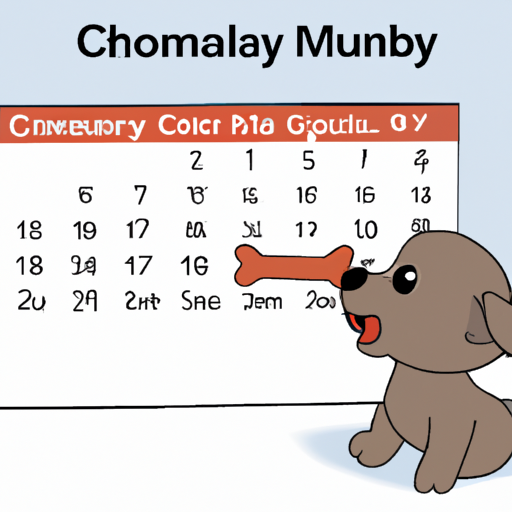1. Introduction
As a caregiver, you’re probably well aware that caring for a puppy is no small feat. Just like human babies, puppies have their own developmental milestones, and teething is one of them. Understanding when and how puppies teeth can help you better care for your furry friend during this important phase of their life.
2. Puppy Teething Timeline
Puppies are born without teeth, but this changes quickly. Here’s a general timeline of when puppies start teething:
- 2-4 weeks: Puppies start to get their baby teeth, also known as deciduous teeth.
- 3-6 weeks: All baby teeth are in.
- 12-16 weeks: Puppies start to lose their baby teeth, which are replaced by adult teeth.
- 6-7 months: All adult teeth should be in.
This timeline can vary slightly depending on the breed and individual puppy, but it’s a good general guideline.
3. Signs of Teething
You might be wondering how you can tell if your puppy is teething. Here are some common signs:
- Increased chewing
- Drooling
- Bleeding gums
- Missing teeth
- Change in eating habits
4. Soothing a Teething Puppy
Teething can be uncomfortable for your puppy. Here are some ways you can help soothe their discomfort:
- Chewing Toys: Provide chew toys designed for teething puppies.
- Cold Treats: Ice cubes or frozen puppy treats can help numb the gums.
- Soft Foods: If your puppy is having trouble eating, try offering softer foods.
Remember, your puppy’s mouth may be very sensitive during this time, so be gentle during play and feeding times.
5. Dental Care for Puppies
Maintaining good dental hygiene is also important during the teething phase. Here are some tips:
- Start brushing your puppy’s teeth early to get them used to it.
- Use a toothpaste designed for dogs.
- Avoid hard chews that could break your puppy’s teeth.
6. Potential Problems and Solutions
Sometimes, puppies can experience problems during teething. Here are some common issues and what you can do:
| Problem | Solution |
|---|---|
| Persistent baby teeth | If baby teeth don’t fall out, they may need to be removed by a vet |
| Misaligned teeth | This can cause problems with eating and may require veterinary intervention |
| Teeth grinding | This could be a sign of pain and should be checked by a vet |
7. Conclusion
Teething is a normal part of puppy development, but it can be a challenging time for both you and your puppy. By understanding the process and knowing how to help your puppy cope, you can make this phase easier on both of you.
8. FAQ
Q: When do puppies start and stop teething?
Puppies generally start teething around 2-4 weeks of age and finish by the time they’re about 7 months old.
Q: How can I soothe my teething puppy?
Offering chew toys, cold treats, and soft foods can help soothe a teething puppy.
Q: What should I do if my puppy’s baby teeth don’t fall out?
If your puppy’s baby teeth don’t fall out, you should take them to a vet. The teeth may need to be removed to prevent problems.
Q: What are signs of teething?
Common signs of teething include increased chewing, drooling, bleeding gums, missing teeth, and changes in eating habits.
Q: How can I maintain my puppy’s dental hygiene?
Start brushing your puppy’s teeth early, use dog toothpaste, and avoid hard chews that could break their teeth.



